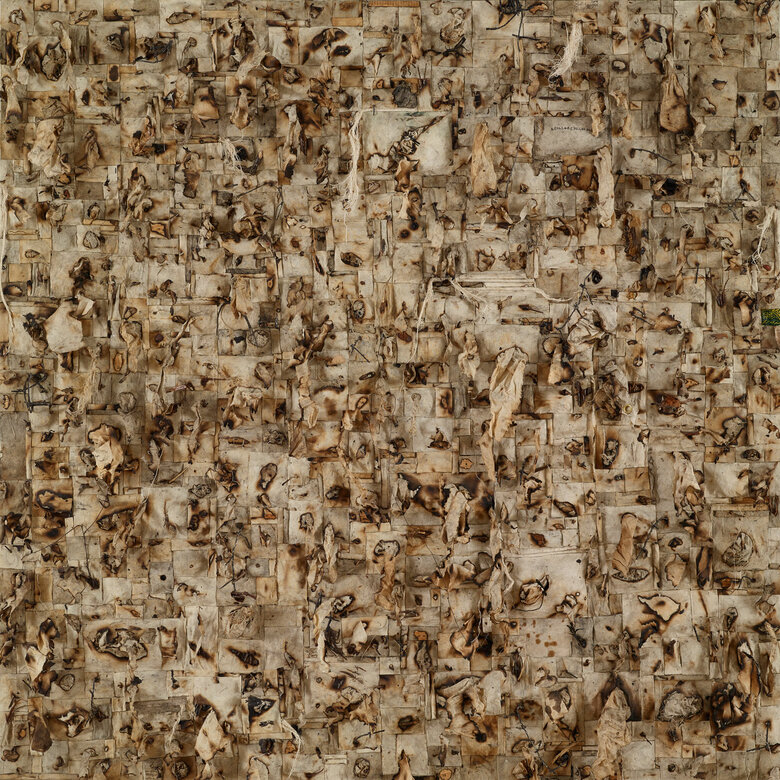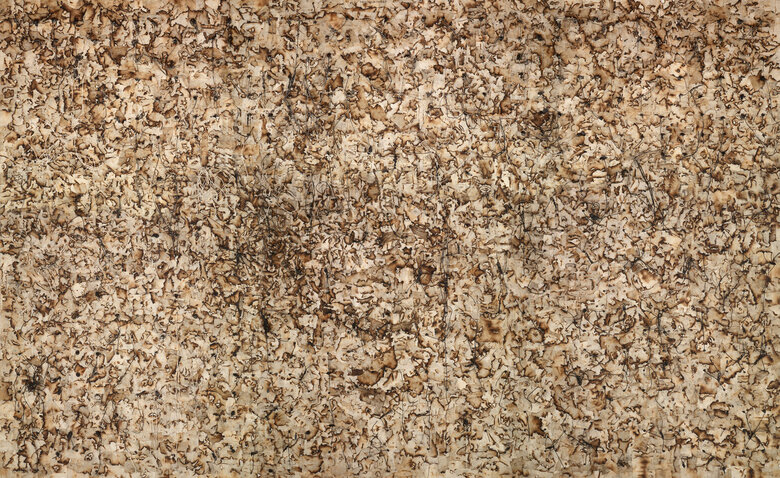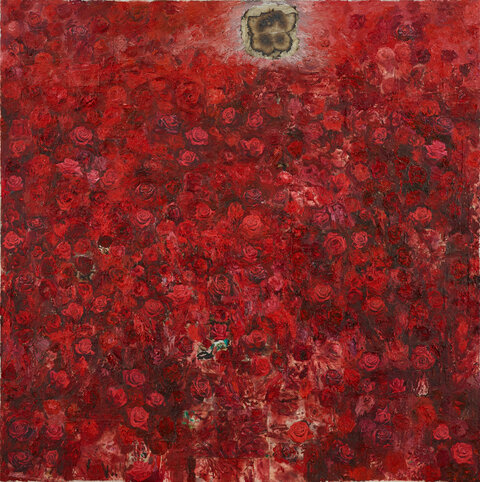Portrait (HOOPOE), 2010, by Iraqi artist Hanaa Malallah is a melange of codes, signs, and symbols. Malallah employs the 'ruins technique,' a process that many Iraqi artists have adopted since the early 1970s, which involves using damaged materials to represent themes of ruin. In this piece the artist folds the canvas pieces and subjects them to fire. This process of ‘ruining’ the material not only depicts destruction, but also brings to the forefront the tangible materiality of symbolic structures.
An important recurrent symbol in Malallah’s work is the Hoopoe (hudhud) bird, which has both religious and secular associations for the artist. It appears across Islamic religious texts including the Quran. Malallah’s first encounter with the Hoopoe in text was through the Sufi writer Attar in his most famous work Mantiq al-tair (The Conference of the Birds), an allegory about a group of birds led by the wise hoopoe. The artist identifies with this character, seeing it as the ‘quintessential survivor’. She uses the images of the hoopoe (sometimes taxidermied) because it allows her to explore the notion of survival as well as suffering: “the shape is there but the content (life) is not.” This portrait conveys a powerful sense of defiant endurance — not merely in opposition to the destruction, but forged within it.












